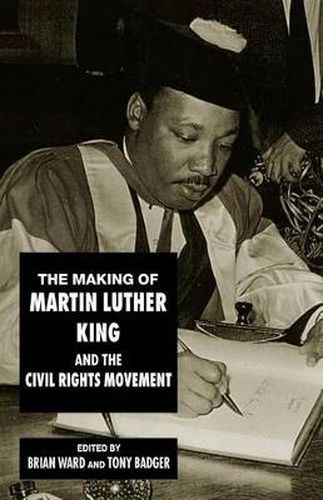Readings Newsletter
Become a Readings Member to make your shopping experience even easier.
Sign in or sign up for free!
You’re not far away from qualifying for FREE standard shipping within Australia
You’ve qualified for FREE standard shipping within Australia
The cart is loading…






The Making of Martin Luther King and The Civil Rights Movement incorporates the changing focus of civil rights movement studies to focus on communities and leaders heretofore ignored or under-represented, and thereby challenges many of the agendas established by civil rights scholarship of the past twenty-five years. We learn from essays on communities in Louisiana, Arkansas, and Montgomery that key centers of black life, such as unions, schools, teachers, businessmen, and masonic lodges played important roles in the movement. We learn of the importance of influential local leaders such as W. H. Flowers in Arkansas and Edgar Daniel Nixon in Montgomery, who were tremendously effective at organizing on the local level.The volume also confronts paradigms of history such as the notion that the Civil Rights Movement can be traced from the reformist integration of King, to the revolutionary black nationalism of Malcolm X, Stokely Carmichael, and the Black Panther Party. Clayborne Carson argues in a pathbreaking essay that there were radical undercurrents in mass black movements of the 1950s and early 60s, and that these undercurrents contained the seeds of the most significant mass movements of subsequent decades. In contrast, black power militancy of the late 1960’s, according to Carson, was either readily suppressed or transformed into forms that did not threaten the dominant political and economic elites.
$9.00 standard shipping within Australia
FREE standard shipping within Australia for orders over $100.00
Express & International shipping calculated at checkout
The Making of Martin Luther King and The Civil Rights Movement incorporates the changing focus of civil rights movement studies to focus on communities and leaders heretofore ignored or under-represented, and thereby challenges many of the agendas established by civil rights scholarship of the past twenty-five years. We learn from essays on communities in Louisiana, Arkansas, and Montgomery that key centers of black life, such as unions, schools, teachers, businessmen, and masonic lodges played important roles in the movement. We learn of the importance of influential local leaders such as W. H. Flowers in Arkansas and Edgar Daniel Nixon in Montgomery, who were tremendously effective at organizing on the local level.The volume also confronts paradigms of history such as the notion that the Civil Rights Movement can be traced from the reformist integration of King, to the revolutionary black nationalism of Malcolm X, Stokely Carmichael, and the Black Panther Party. Clayborne Carson argues in a pathbreaking essay that there were radical undercurrents in mass black movements of the 1950s and early 60s, and that these undercurrents contained the seeds of the most significant mass movements of subsequent decades. In contrast, black power militancy of the late 1960’s, according to Carson, was either readily suppressed or transformed into forms that did not threaten the dominant political and economic elites.